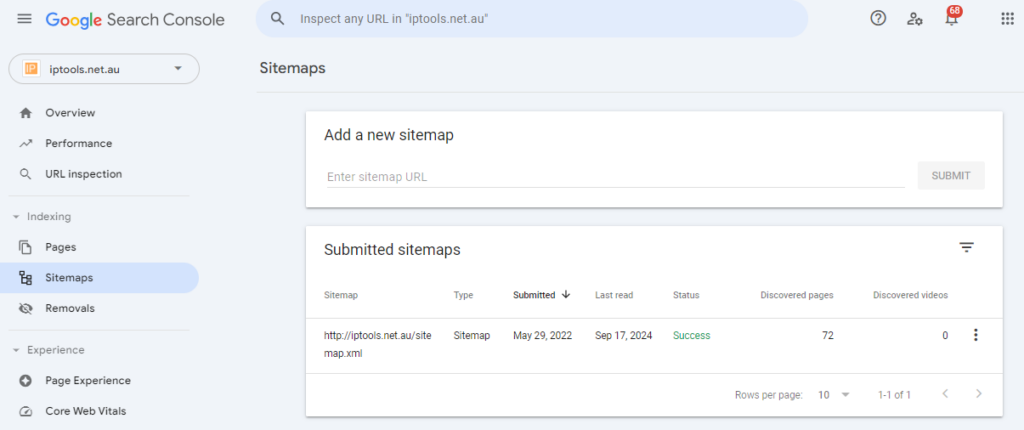What is a Sitemap and Why is it Important for SEO?
A sitemap is a crucial tool for any website looking to improve its SEO. It’s essentially a file that lists all the important pages on your site, helping search engines like Google understand the websites structure and places where there is useful content.
This article will outline the key information you need to know about Sitemaps
What is a Sitemap?
A sitemap is an XML file that provides search engines with a list of your website’s pages. It contains information about each URL on your site, including when the page was last updated, how often it changes, and how it relates to other pages. Think of it as a guide or index for search engine crawlers and computers to know how your site looks like before they process the site, helping them find and index your content more efficiently.
How is a Sitemap Generated?
Most websites use automated tools or plugins to generate sitemaps. If your site runs on platforms like WordPress, you can use SEO plugins like Yoast SEO or All in One SEO to automatically generate a sitemap. These plugins will then automatically generate an updated sitemap every time you add a new page or post or update a webpage.
For custom websites, online tools like XML-Sitemaps.com can be used to create one, however they may need to be manually re-generated on a regular basis if the website is frequently updated.
Here’s a basic example of what a sitemap looks like for a website containing a home page and an about us page.:
<urlset xmlns="http://www.sitemaps.org/schemas/sitemap/0.9">
<url>
<loc>https://seohawk.com.au/</loc>
<lastmod>2024-09-21T10:46:10+00:00</lastmod>
<priority>1.00</priority>
</url>
<url>
<loc>https://seohawk.com.au/about</loc>
<lastmod>2024-09-21T10:46:10+00:00</lastmod>
<priority>0.80</priority>
</url>
</urlset>Each page is defined in this way, giving search engines key details to prioritize which pages to crawl.
How is a Sitemap Submitted to Google?
Once your sitemap is generated, submitting it to Google is straightforward. You’ll need access to Google Search Console. Here’s a step-by-step process:
- Log in to Google Search Console.
- Select your website from the dashboard.
- In the left-hand menu, go to Sitemaps under Index.
- Enter the URL of your sitemap (usually something like
https://www.example.com/sitemap.xml). - Click Submit.

After submission, Google will start processing the sitemap and use it to better understand your website’s content
How is a Sitemap Used?
Once submitted, search engines will use the sitemap to guide their crawlers as they index your website. While search engines don’t solely rely on your sitemap (they still prefer following internal and external links), it helps them discover important content more efficiently, especially if your site has complex navigation or if some pages aren’t easily reachable through normal links.
For example, if you have a large eCommerce site or a blog with deep category structures, a sitemap ensures that even pages buried several levels down will still be indexed.
Why is a Sitemap Important?
1. Improves Crawl Efficiency
A sitemap improves the efficiency of search engine crawlers by directing them to the most important pages on your site. Without it, crawlers might miss pages that are harder to reach or don’t have many links pointing to them.
2. Ensures New Content is Found
If you frequently update your site with new content, a sitemap helps search engines discover what’s changed and index those pages faster. You can indicate the frequency of changes (e.g., daily, weekly, or monthly) in the sitemap for certain types of pages however Google admits it doesn’t really take much notice of this field.
3. Supports SEO for Large Websites
For websites with hundreds or thousands of pages, like eCommerce stores, a sitemap ensures that every page or product gets indexed. Otherwise, certain pages might get overlooked by search engines, especially if they’re not well-linked within the site’s structure or if the crawler needs to visit the site a few times to fully process everything..
4. Helps Sites with Poor Internal Linking
If your internal linking structure is weak or not fully developed, a sitemap can bridge that gap, ensuring important pages still get indexed by search engines. It’s not a substitute for good navigation and internal links, but it helps.
5. Provides Insights Through Google Search Console
Once your sitemap is submitted, Google Search Console provides insights into how many pages have been indexed or if it’s having trouble with certain pages. This helps you spot and resolve issues that may be preventing a page from getting crawled and featured on Google Search.

Final Words
Whether you run a small blog or a large online store, taking the time to implement a sitemap is a necessary tasks as part of ensuring your site is correctly setup and ensure effective SEO.
It’s an affordable and easy to do step that makes a world of difference when trying to be seen by your customers. If you require any assistance with this process, please explore our Technical SEO services.
Leave a Reply